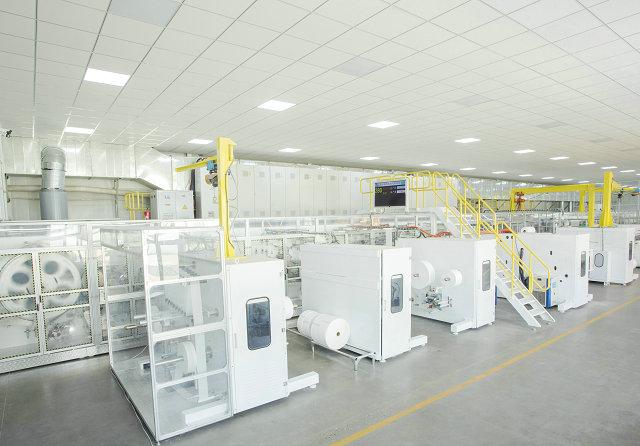Author:Haina Machinery Factory FROM:Diaper Machinery Manufacturer TIME:2024-12-01
Sanitary pad machines play a crucial role in the production of menstrual hygiene products, catering to the growing demand for sanitary pads worldwide. Understanding the typical lifespan of these machines is essential for manufacturers and investors in the menstrual health sector. This article will explore various factors influencing the lifespan of sanitary pad machines, maintenance practices, and how to ensure maximum efficiency throughout their operational life.
Sanitary pad machines are specialized equipment designed to manufacture napkins that provide comfort and protection during menstruation. These machines vary in complexity, from simple manual setups to fully automated lines that handle everything from material feeding to packing. The design and technology used in these machines significantly influence their durability and lifespan.
The average lifespan of a sanitary pad machine can range from 10 to 15 years, depending on several factors. High-quality machines built with durable materials often last longer than those made with lower-grade components. Additionally, the frequency of use plays a significant role in determining how long the machine will operate effectively before requiring major repairs or replacement.

Several factors can impact the longevity of sanitary pad machines. Firstly, the quality of materials used in manufacturing the machine affects its durability. Machines constructed from high-grade steel and advanced polymers tend to withstand wear and tear better than those made from inferior materials. Secondly, the frequency and intensity of operation can also shorten the lifespan. Machines that run continuously for long hours may experience more wear compared to those used intermittently.

Regular maintenance is vital for extending the lifespan of sanitary pad machines. Implementing a routine maintenance schedule can help identify potential issues before they escalate into significant problems. Key maintenance practices include lubrication of moving parts, regular inspections for wear and tear, and timely replacement of components that show signs of damage. Training operators to identify and report issues can also enhance the machine's performance and longevity.

As technology evolves, newer models of sanitary pad machines incorporate advanced features that can improve efficiency and lifespan. Automation, for example, can reduce human errors and minimize wear on the machine. Additionally, smart technologies allow for real-time monitoring of machine performance, enabling proactive maintenance and reducing downtime. Investing in modern machinery equipped with these advancements can provide a better return on investment over time.
The volume of production significantly influences the lifespan of sanitary pad machines. Machines operating at higher capacities tend to undergo more stress, which can lead to faster degradation. It is essential for manufacturers to balance production goals with machine capabilities. Overloading a machine can lead to increased breakdowns and ultimately shorten its lifespan. Therefore, understanding the operational limits of each machine is crucial for sustainable production.
Investing in high-quality sanitary pad machines can be more economical in the long run, despite the higher initial costs. Machines that require frequent repairs or replacements can significantly increase operational costs over time. Manufacturers should conduct thorough cost-benefit analyses when selecting machines, considering not only the purchase price but also maintenance costs, energy consumption, and potential downtime.
Another aspect to consider is the environmental impact of sanitary pad machines. Machines that are designed with energy efficiency in mind can reduce operational costs and contribute to sustainability. Additionally, using eco-friendly materials in the production process can enhance the overall appeal of the product while addressing environmental concerns. As consumers become more environmentally conscious, adopting sustainable practices can also prolong the relevance and usage of sanitary pad machines.
In conclusion, the typical lifespan of a sanitary pad machine ranges from 10 to 15 years, influenced by various factors such as material quality, maintenance practices, and technological advancements. By investing in high-quality machines, adhering to regular maintenance schedules, and balancing production demands, manufacturers can significantly extend the operational life of their equipment. Moreover, considering economic and environmental factors will not only enhance sustainability but also improve the overall efficiency of production processes. Understanding these elements is key to maximizing the investment in sanitary pad machinery and ensuring continued success in the menstrual hygiene market.
